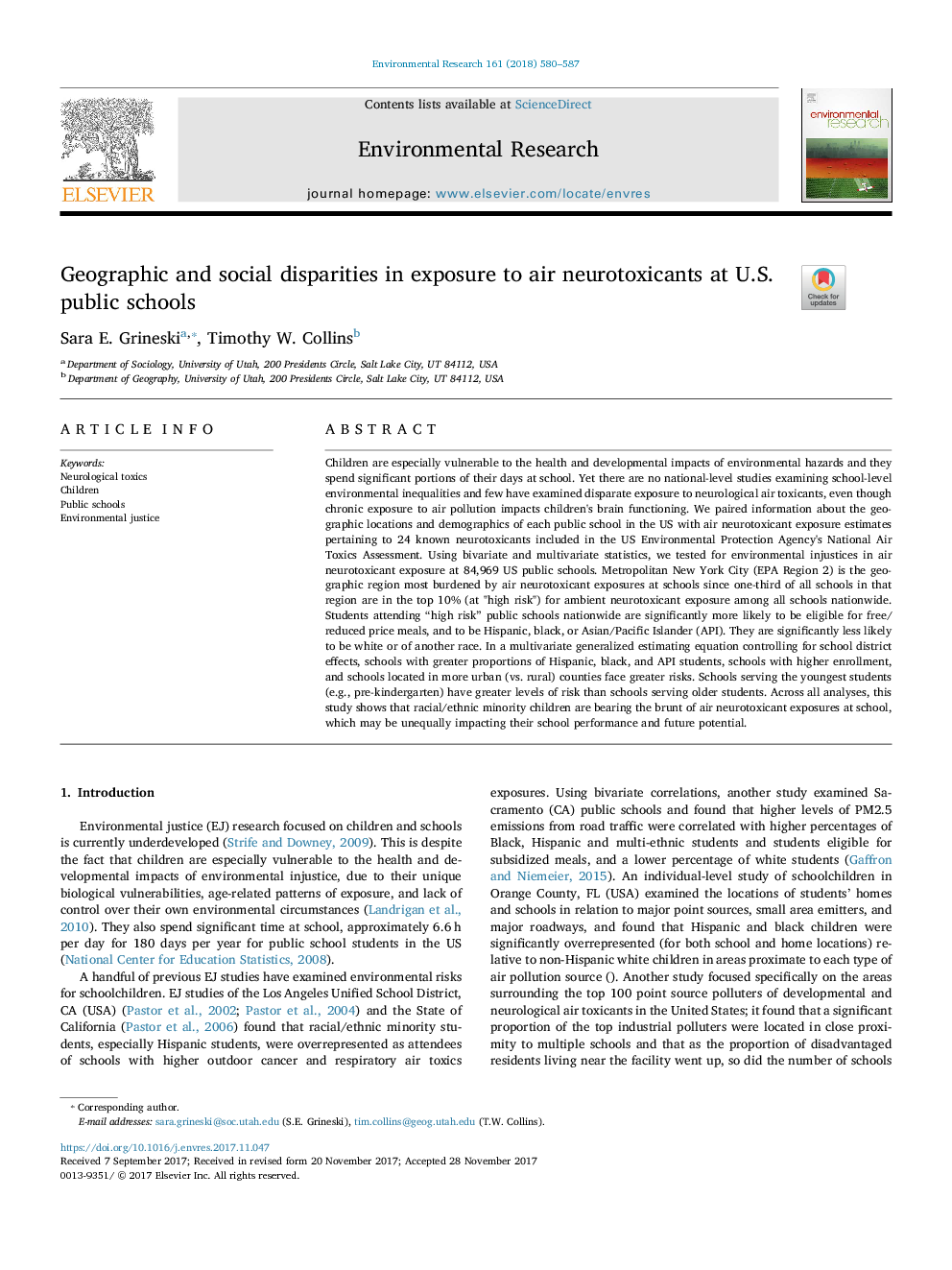ترجمه فارسی عنوان مقاله
نابرابری های جغرافیایی و اجتماعی در معرض نورتوکسین های هوا در مدارس دولتی ایالات متحده
عنوان انگلیسی
Geographic and social disparities in exposure to air neurotoxicants at U.S. public schools
| کد مقاله | سال انتشار | تعداد صفحات مقاله انگلیسی |
|---|---|---|
| 153897 | 2018 | 8 صفحه PDF |
منبع

Publisher : Elsevier - Science Direct (الزویر - ساینس دایرکت)
Journal : Environmental Research, Volume 161, February 2018, Pages 580-587
ترجمه کلمات کلیدی
توکسین عصبی، فرزندان، مدارس دولتی، عدالت محیطی،
کلمات کلیدی انگلیسی
Neurological toxics; Children; Public schools; Environmental justice;

